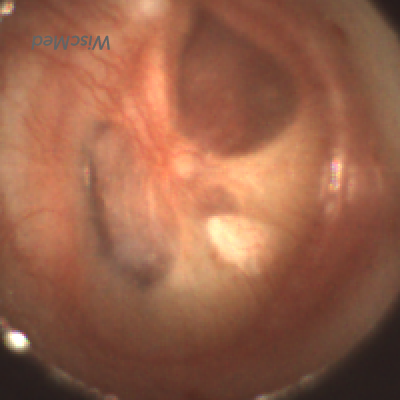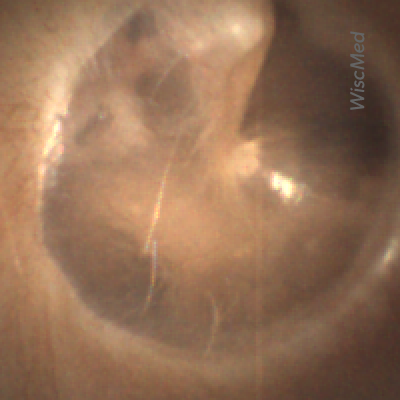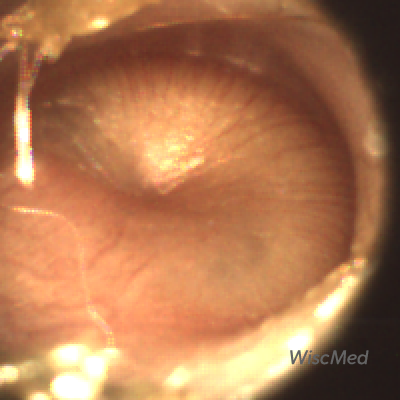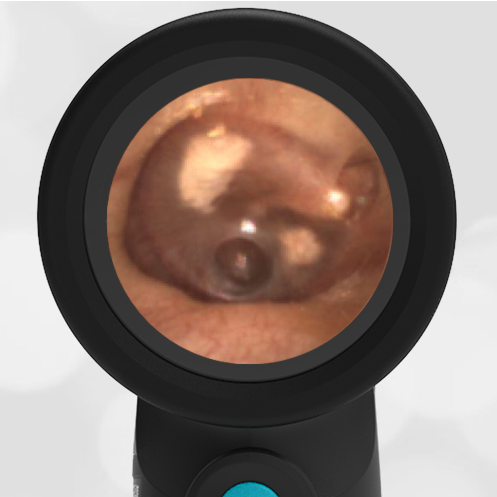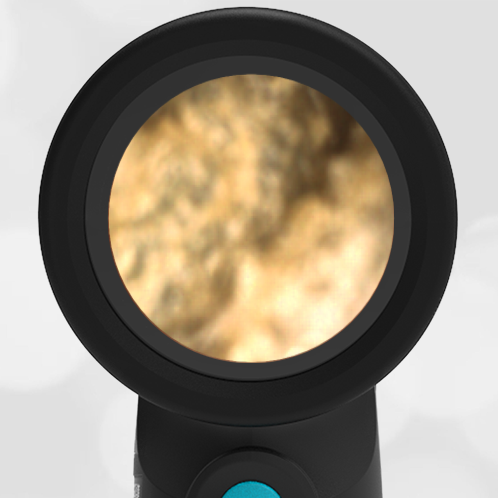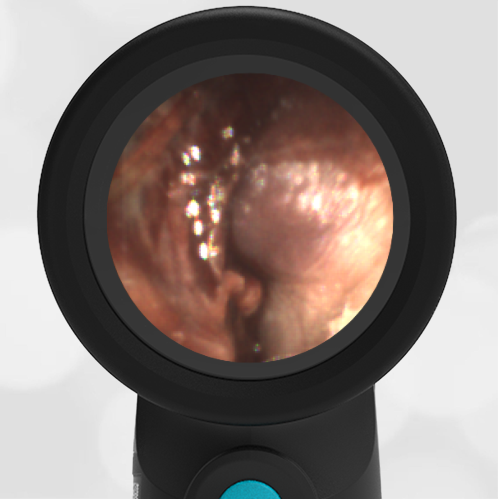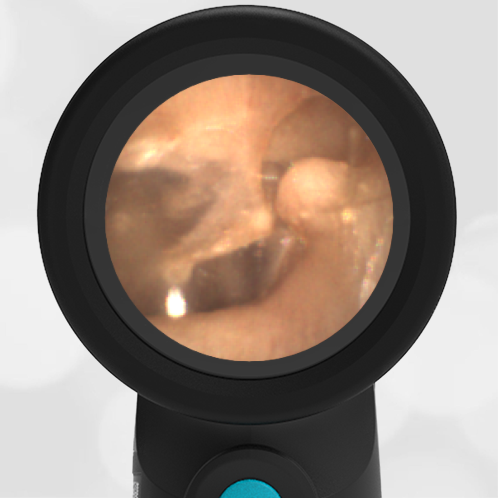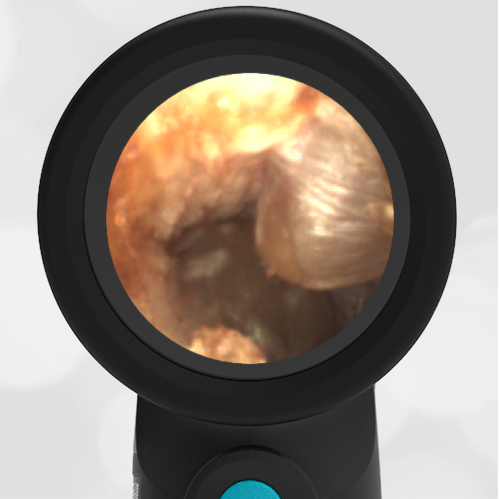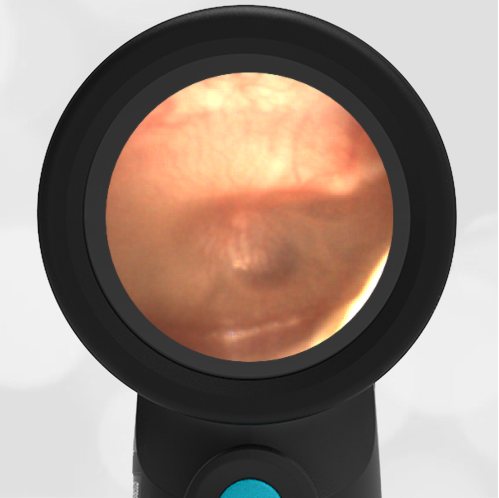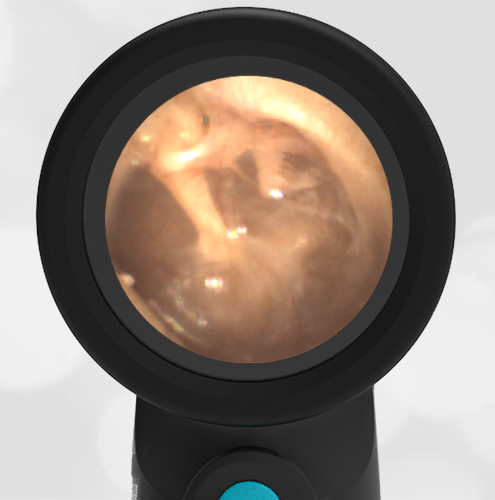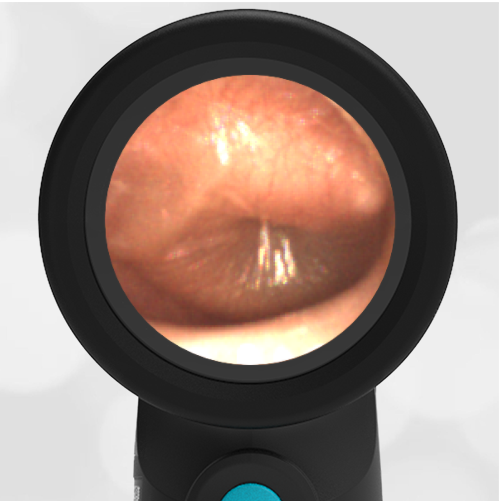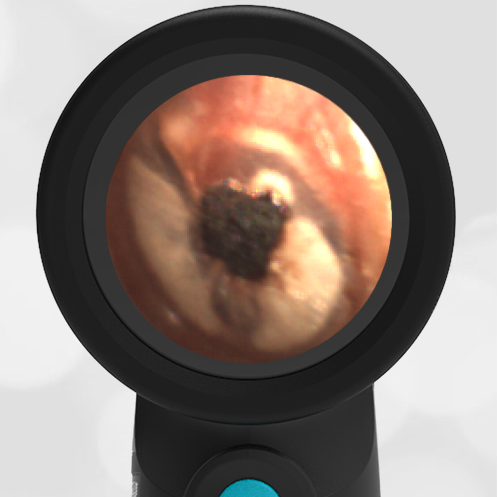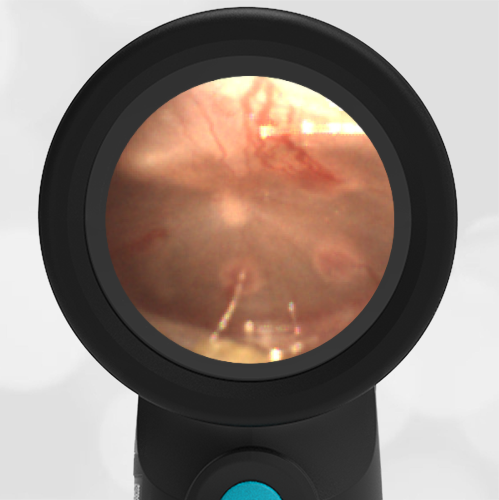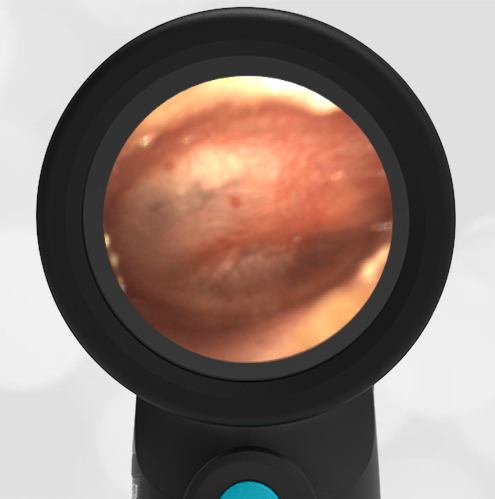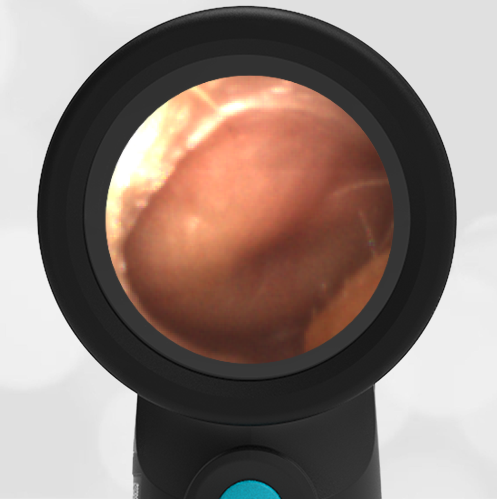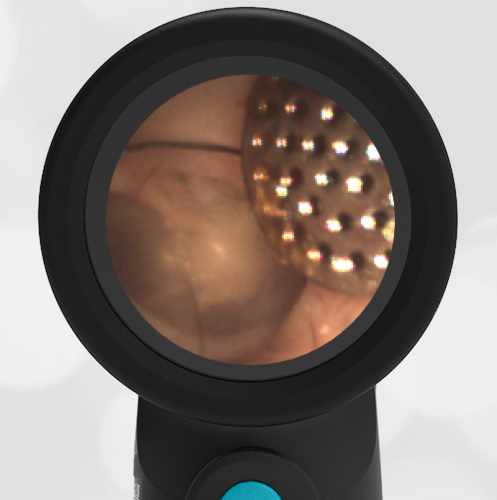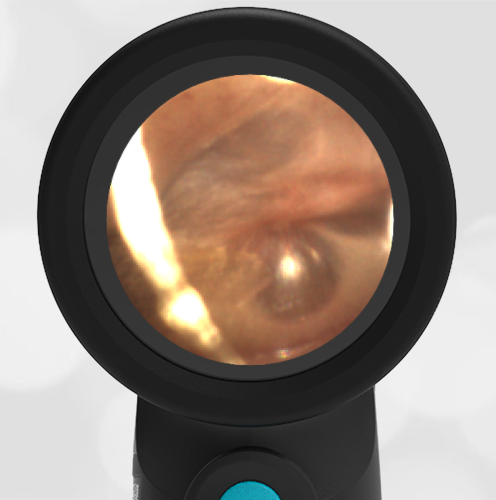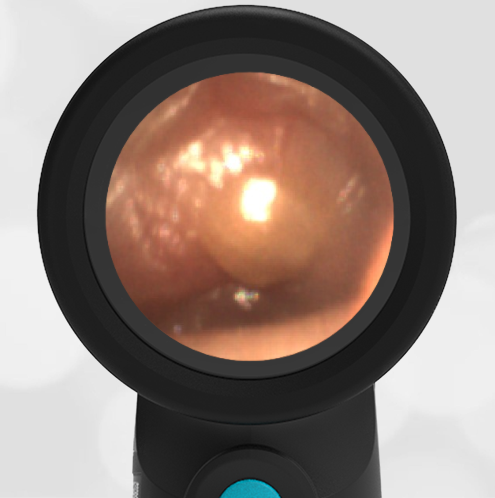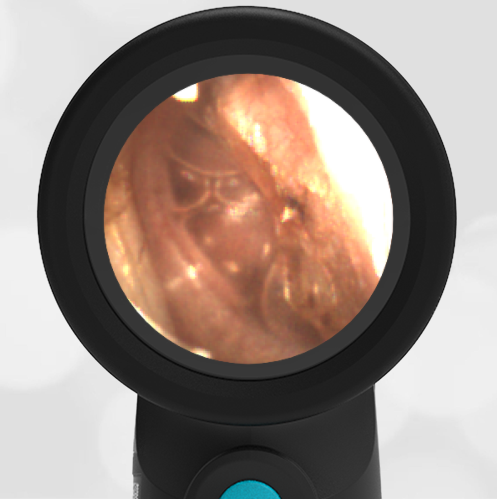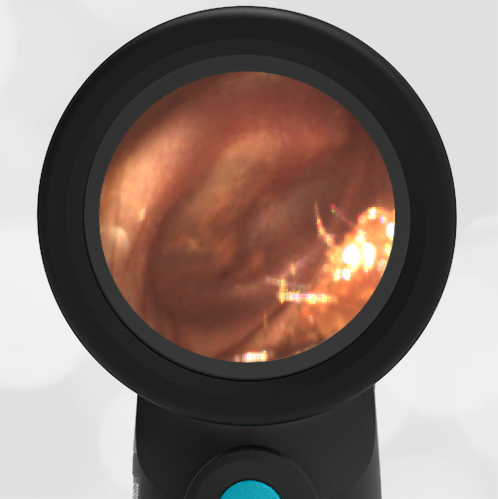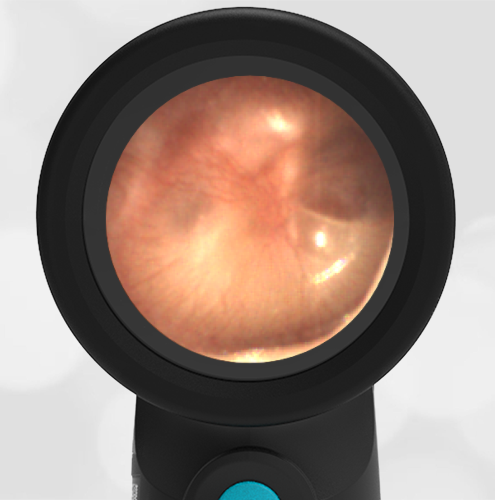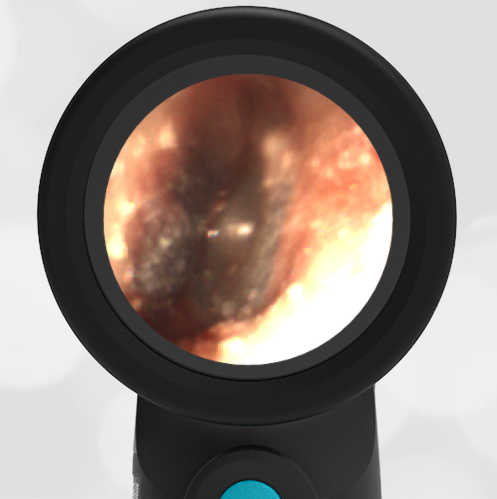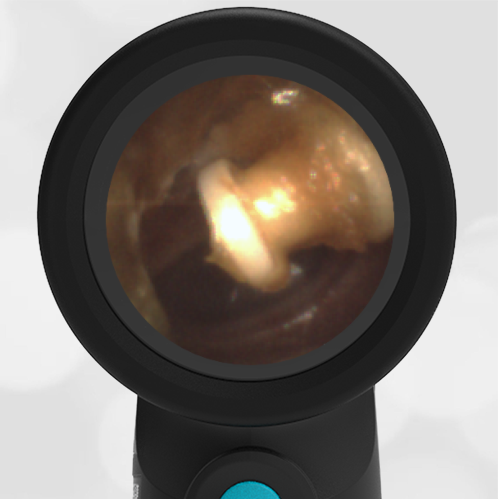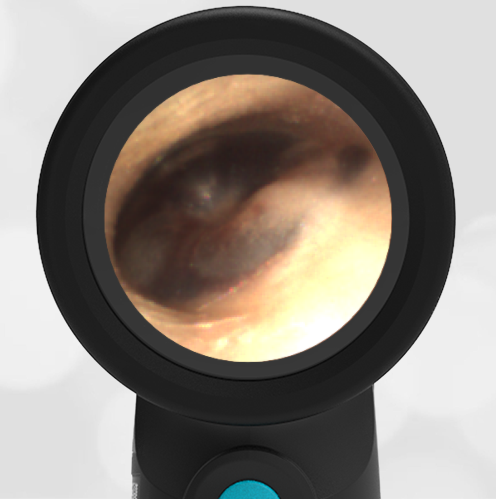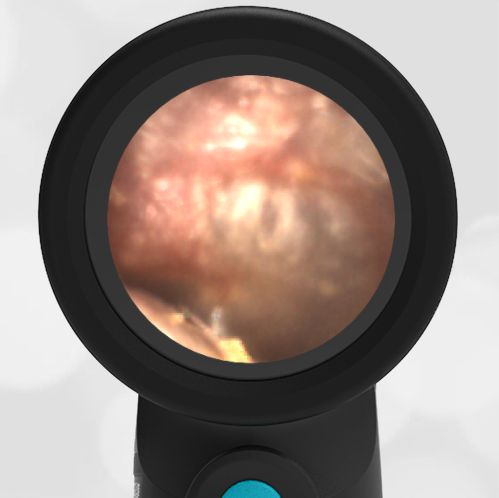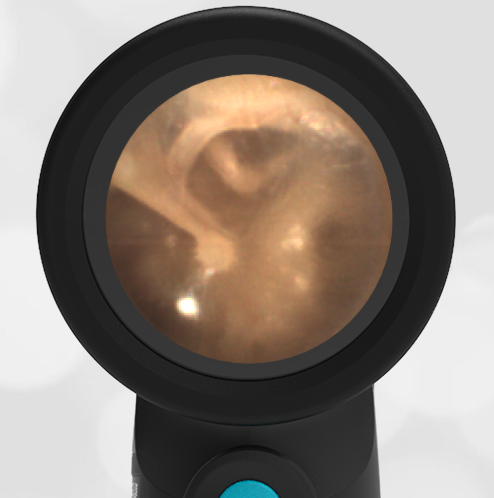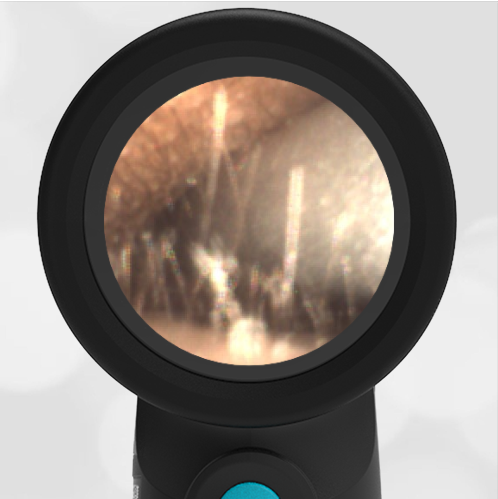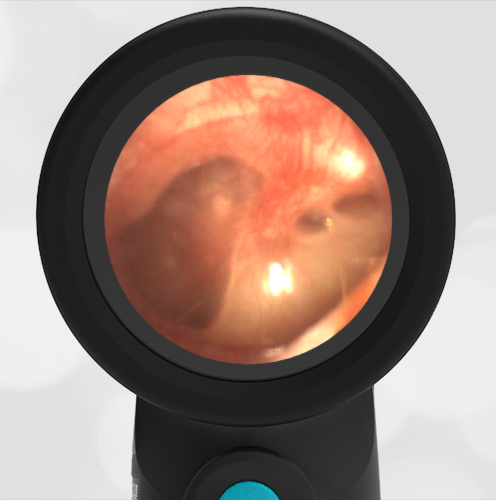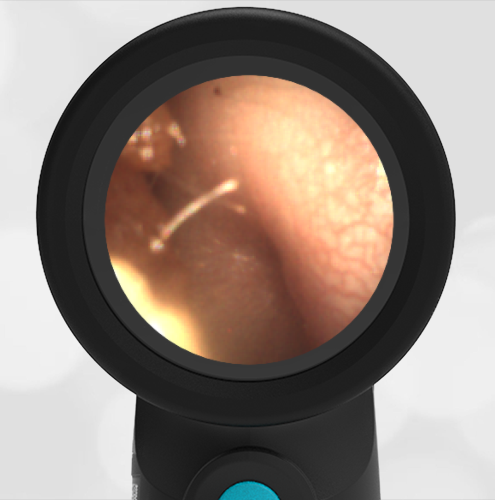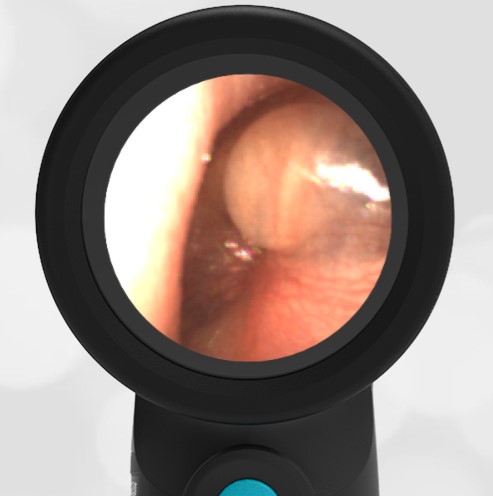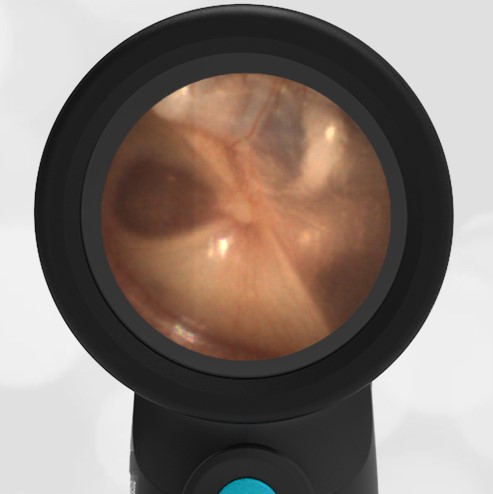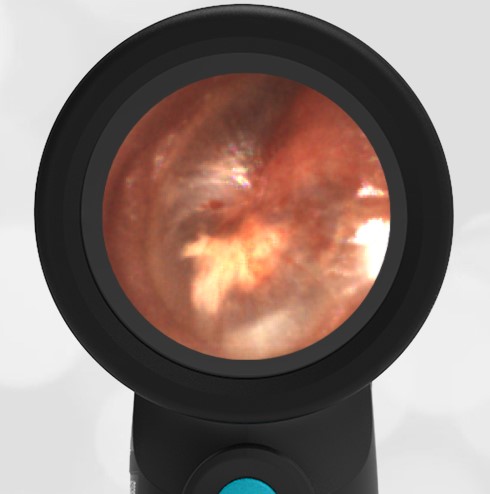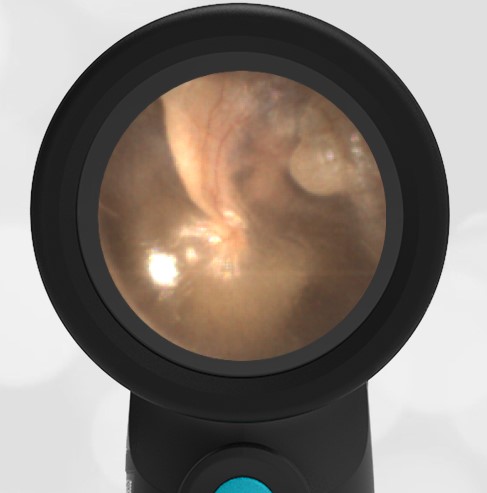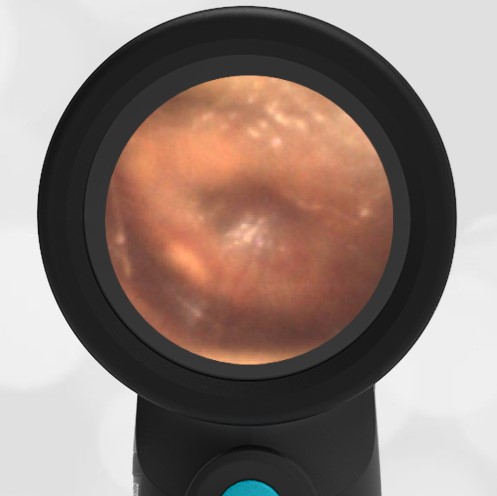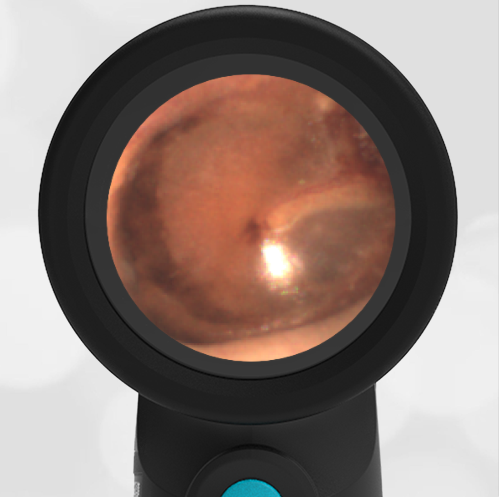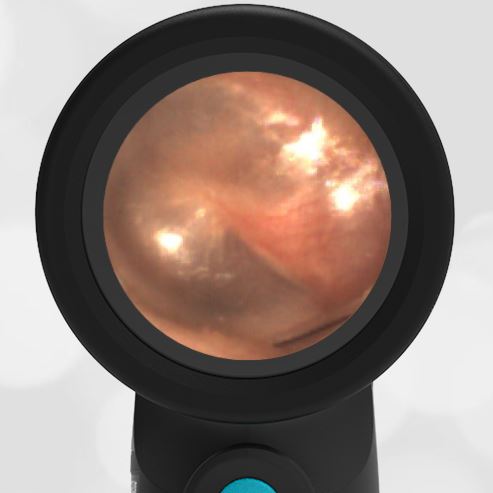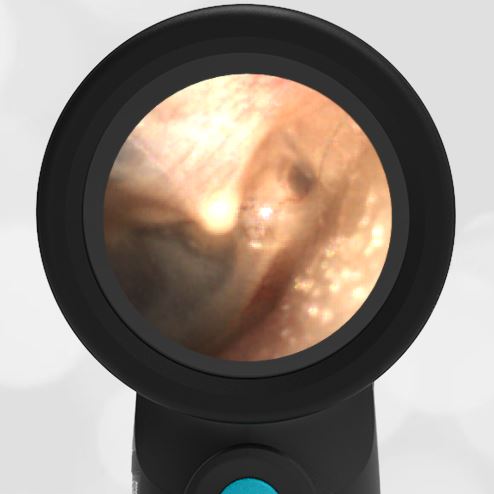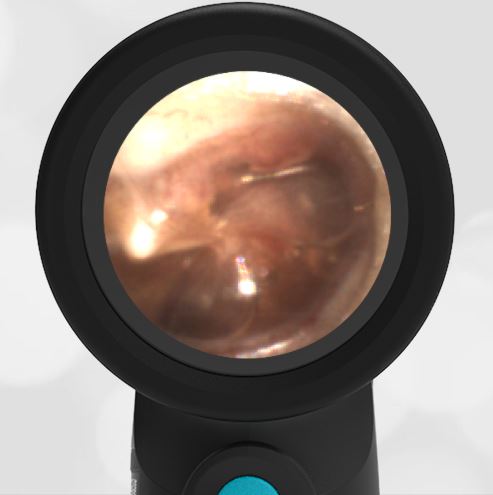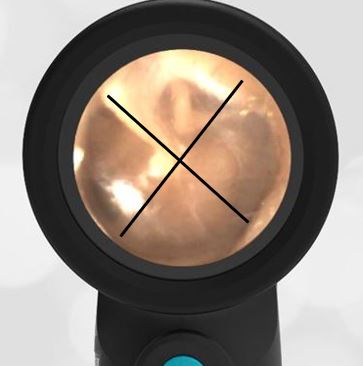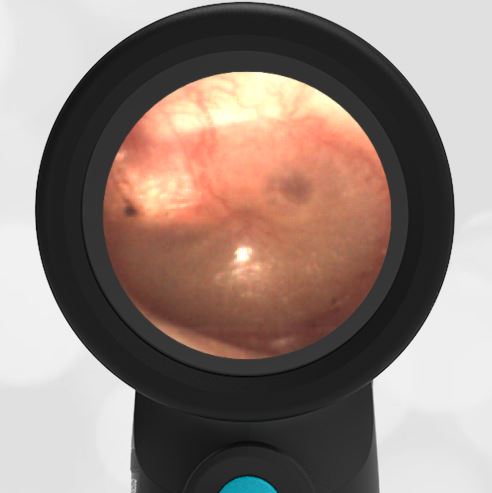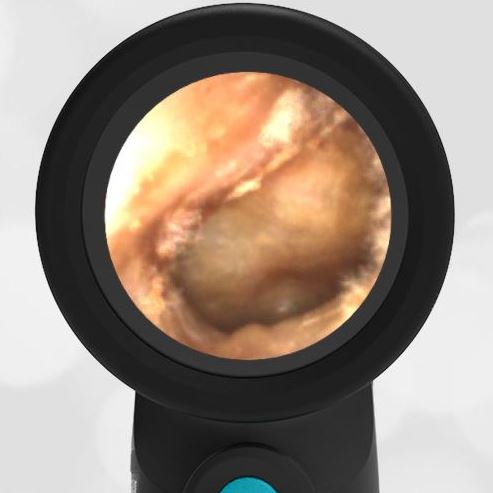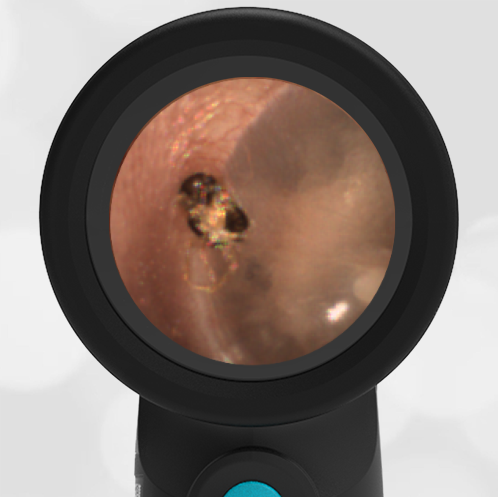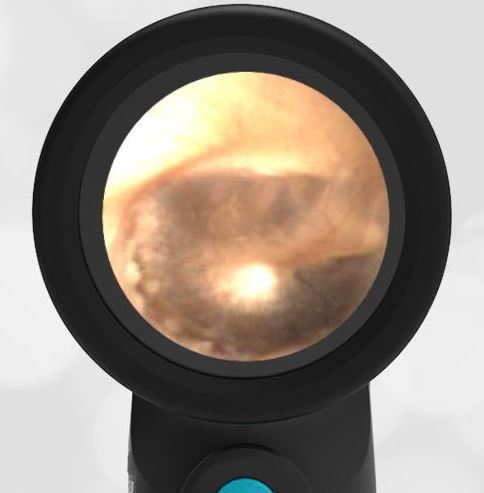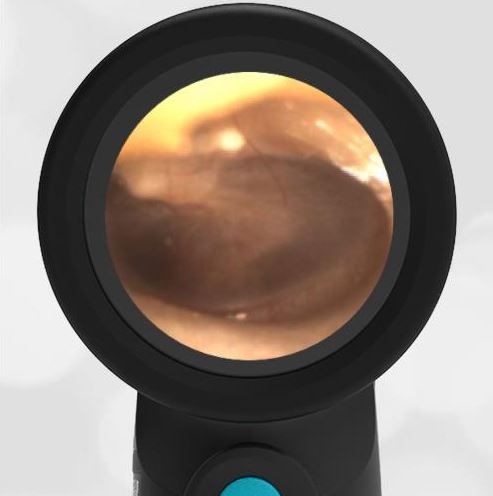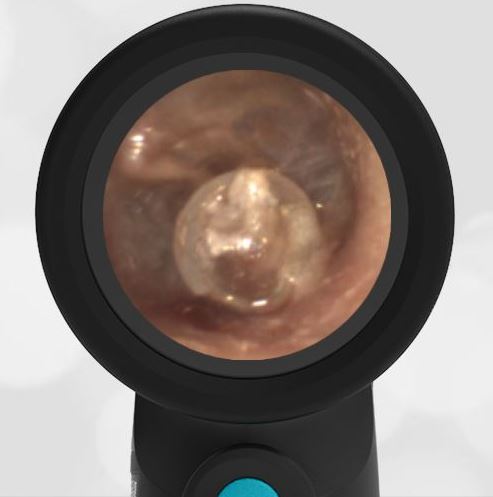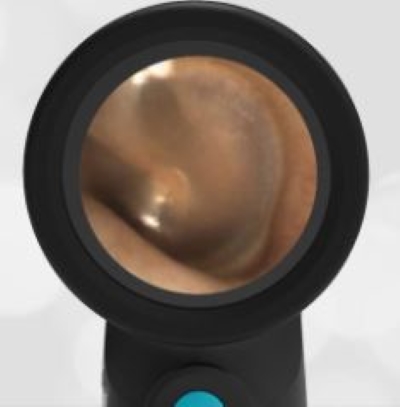
Otitis Media with Effusion – September 14, 2023
A 32-year-old female presents to urgent care with concern for left ear pain. She has had several days of viral symptoms including cough, congestion, low-grade fever, and fatigue. She has been resting and taking over-the-counter analgesics to manage the symptoms.
A day ago, she began to experience “muffled” hearing in her left ear and a sense of pressure. She has an international trip in two days and wants to make sure she will be able to fly. The image of her left ear taken with the WiscMed Wispr digital otoscope is shown. What is the next step in management for this patient?
The patient has otitis media with effusion (OME). She should be reassured that her symptoms should resolve without intervention and that she is safe to fly.

The hallmark of otitis media with effusion (OME) is evidence of effusion (fluid) behind the ear drum along with air-fluid levels. The malleus bone is identifiable. The air-fluid levels indicate that the middle ear space is being ventilated by the Eustachian tube. This ventilation suggests that with time the effusion should successfully drained to the posterior nasal pharynx. There is no bulging as would be seen in acute otitis media (AOM). No bulging means the pressure on both sides of the tympanic membrane (TM, “ear drum”) is equal. Most likely, this equalization will be able to be maintained in a pressurized commercial airplane where the cabin altitude will be 6,000-8,000 feet. The patient should be encouraged to “Valsalva” as necessary to assist with pressure equalization in the middle ear space.
Compare this case of OME with a normal ear and with the bulging ear in AOM.
- Otitis Media with Effusion
- Normal Ear
- Acute Otitis Media
WiscMed has created a visual diagnosis guide that may be found and downloaded here.
Still not convinced? Click Here for a Free Trial

